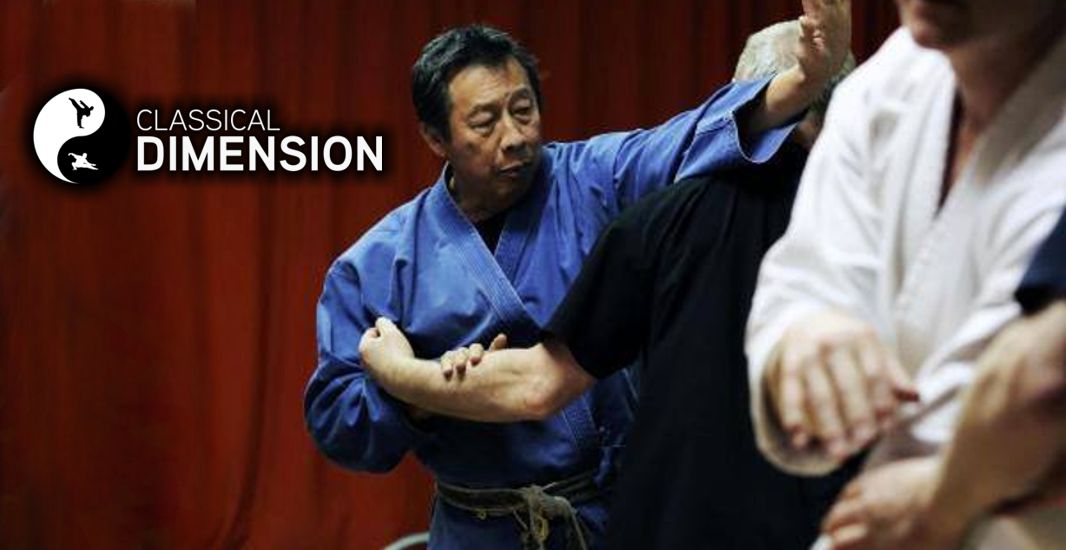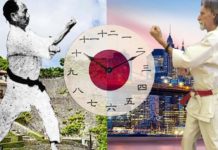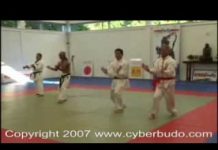A true understanding of karate is to found by returning to classical kata. Unlike modern karate, it is forms which hold the key to ancient knowledge. Modern karate, as taught in both West and East, focuses on the basic block/punch/kick with its supposedly obvious explanations.
What then constitutes the art of karate? The implication in the name “art” is that it is hidden. In modern times we have always been told that techniques always go in sequence but this is not necessarily so. For example, a sequence of any four moves is open to several interpretations – not just one. To illustrate the point, lets look at it with an open attitude.
Instead of a block, perhaps it is the end part of a grab either by yourself or an opponent. would that not then potentially change the explanation of both the preceding and following moves? To illustrate the point further, could a punch actually be a grab or lock/stretch; alternatively could it perhaps be a pull (with the reverse hand) and strike?
The expression “A form has no form” is something I constantly wrestled with and only know understand. With the broader interpretation I can now look at the form, irrespectively of style and see so many techniques being performed there – not just the obvious and basic ones. The way it is performed also shows the different levels of understanding reached by the person performing it.
As we seek greater understanding of kata, so emphasis has now shifted to pressure points. But again, these are only one aspect of the whole art.
Karate which relies upon the power of the block, punch and kick is karate for the young, so how might a person, say of 60 years of age, defend themselves against a 20 year old? As we grow older, so our bodies and mental attitudes change, so training, then, has to be modified accordingly. If this modification cannot be made, then the older person quits. Yet it is the duty of the martial artist to train a whole lifetime, all the while improving like like wine. the only way this modification can be achieved, then, is through classical karate, where hidden between the forms are the real moves.
So let’s open our minds to encompass all possibilities. When I began karate, I remember the pride I had as I performed high kicks. Little did I realize that one day I would relegate such achievements to the realms of sport. Now I have come to realize that karate is like a multifaceted gem, with aspects such as health, sport, self defense and social interaction. Lets treasure karate in all its aspects and use it according to our individual needs and abilities.
BUNKAI
Bunkai is the interpretation of the uses of the movement of the techniques in the kata. Many operate from the angle of block, kick and punch. This is operating the kata at the base or primary level. The other extreme is that all the kata techniques are knockouts, both are correct but that is not what Karate is about. Look at all the history of Karate and the other pugilistic arts, the masters are all old and cannot operate from the angle of power and speed. Karate is a complete art in itself if one knows how to decipher the forms. Locks, throws, punches, kicks and pressure point techniques are all present. Only with proper understanding of the whole picture can the art be appreciated.
Most of the modern systems of Karate have in them the Heian/pinan Katas .These were abridged from the Kata Kushanku, by Master Itosu .Techniques were toned down and watered down for the elementary school system. What is not known by many Karate people is that RoRoKu (Kushanku) and his top student taught many of the Okinawan masters that came over to Fuchou province in China, White Crane (Hakusuru). Not only White Crane but female White Crane, Ro Roku.
This was told to me by my colleague Charles Wee. We are all students of Master Yek Sing Ong based in New Zealand. Master Yek’s teacher for 30 years was Master Huang Shyan Shen. He was the top student of Ro Roku and also the top student of the famous Taichi master Cheng Man Ching. For years he kept the earlier part of his life in check for reasons of his own. What does all this have to do with Karate? I believe, from my understanding, that Karate is a “soft art”.






